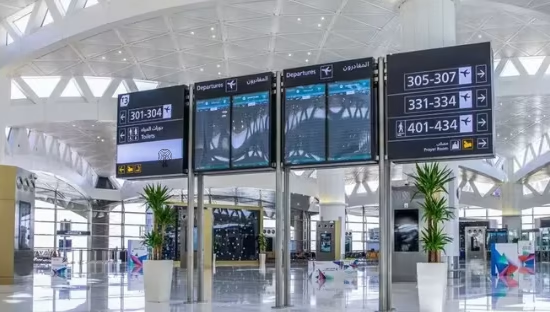
Orange Polska Brings Automatic eSIM Pre-Installation to Android Smartphones
A month ago, Orange Polska took a bold step forward by launching a service that automatically pre-installs eSIMs on new iPhones. It was a smart, consumer-friendly move that removed one of the last bits of friction from mobile activation.
Now, the operator has announced the next phase—support for selected Android smartphones—and that’s where things get really interesting.
No More QR Codes, No More Setup Stress
If you’ve ever installed an eSIM manually, you know the routine: scan a QR code, dive into settings, select the right SIM slot, and then wait for activation. Orange’s new system skips all of that. When you buy a compatible phone, the eSIM comes pre-installed and ready to go — all you need to do is connect to Wi-Fi. Your plan activates automatically within moments.
That means no fumbling with settings menus, no risk of scanning the wrong code, and no downtime between unboxing and connecting. In a world where people expect instant digital onboarding, this feels like a natural evolution.
The First Android Models to Join
The automatic eSIM installation feature is now available on a growing list of Android models:
- HONOR Magic V5
- Hammer Construction 2
- Motorola edge 60, G86, and Razr 60
- OPPO Reno 14
- Samsung Galaxy S25, Flip 7, and Fold 7
- Xiaomi 15T
Orange says the list will expand over time, with more devices expected to support the technology in the coming months. In its stores and showrooms, smartphones that include the pre-installation feature are clearly marked, and staff can provide instant assistance if needed.
Why This Matters in the eSIM Race
The move puts Orange among a small but growing group of operators globally that offer seamless, zero-touch eSIM activation. Apple began this trend by removing physical SIM trays from U.S. iPhone models, effectively forcing the ecosystem to catch up. Other operators — such as Deutsche Telekom, AT&T, and EE — have experimented with similar “instant eSIM provisioning,” but usually only on select flagship phones or via companion apps.
By offering automatic pre-installation at the point of sale, Orange reduces activation friction to nearly zero. For travelers, digital nomads, and business users — the core of the eSIM audience — that’s a meaningful difference. It’s not just about convenience; it’s about reliability, especially in moments when connectivity is essential.
Market Competition: A Subtle Power Play in the eSIM Ecosystem
Orange Polska’s automatic eSIM pre-installation isn’t just a customer convenience — it’s a strategic ecosystem move. By embedding its digital SIMs directly into new smartphones, Orange effectively occupies the most valuable real estate in the connectivity market: the moment of device activation.
It’s a playbook reminiscent of operator-locked devices and bundled financing offers, but modernized for the eSIM era. Once an eSIM is pre-installed, users are less likely to explore third-party alternatives or switch carriers — not because they can’t, but because the friction of change increases. In telecom, the easiest option often wins.
For rivals like Play and Plus, the pressure is mounting. They must either roll out similar “instant activation” models or risk being perceived as outdated in a market that increasingly values speed and simplicity. The stakes are high: as Polish consumers grow more comfortable with eSIMs, early movers like Orange could secure long-term customer loyalty by owning the onboarding experience.
The ripple effect extends beyond national borders. Independent global providers — Airalo, Holafly, Nomad — thrive on visibility within app stores and open marketplaces. But pre-installed operator eSIMs create a walled garden, where users never feel the need to browse for alternatives. It’s a subtle but potent shift: from choice-driven competition to ecosystem-driven retention.
In other words, Orange Polska isn’t just simplifying activation — it’s redefining the competitive battlefield, moving the first point of contact closer to the hardware itself. And in the race for digital connectivity dominance, whoever controls that first tap on “Connect to Wi-Fi” might just control the customer.
Where the Industry Is Headed
This development fits a broader telecom trend: operators are gradually removing the need for user intervention entirely. According to GSMA Intelligence, over 1.5 billion eSIM-capable devices are already in use worldwide, yet user adoption lags behind hardware readiness because the activation process still feels technical to many consumers. Automating eSIM installation could change that.
As other European carriers—like Vodafone, Telefónica, and T-Mobile—refine their eSIM onboarding journeys, Orange’s approach shows a concrete, customer-first implementation that others will likely follow.
Final Take: Orange Just Made eSIMs Feel Effortless
What Orange has done here may seem like a small technical tweak, but it’s a major leap toward mainstream eSIM adoption. Automatic pre-installation eliminates one of the biggest usability barriers and sets a new standard for customer experience.
In an era when providers compete on seamlessness as much as price, this gives Orange a strategic edge—especially as Android brands like Samsung, Xiaomi, and HONOR expand their eSIM support. If competitors don’t follow suit soon, users will start noticing who still makes them scan QR codes in 2025. android eSIM pre-installation











